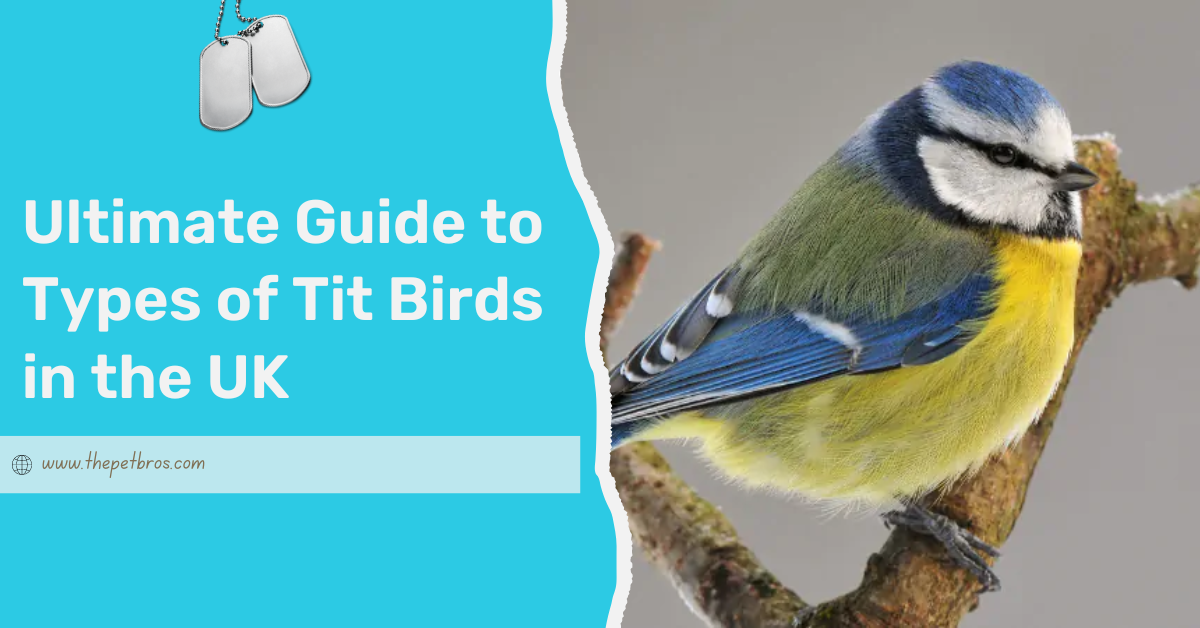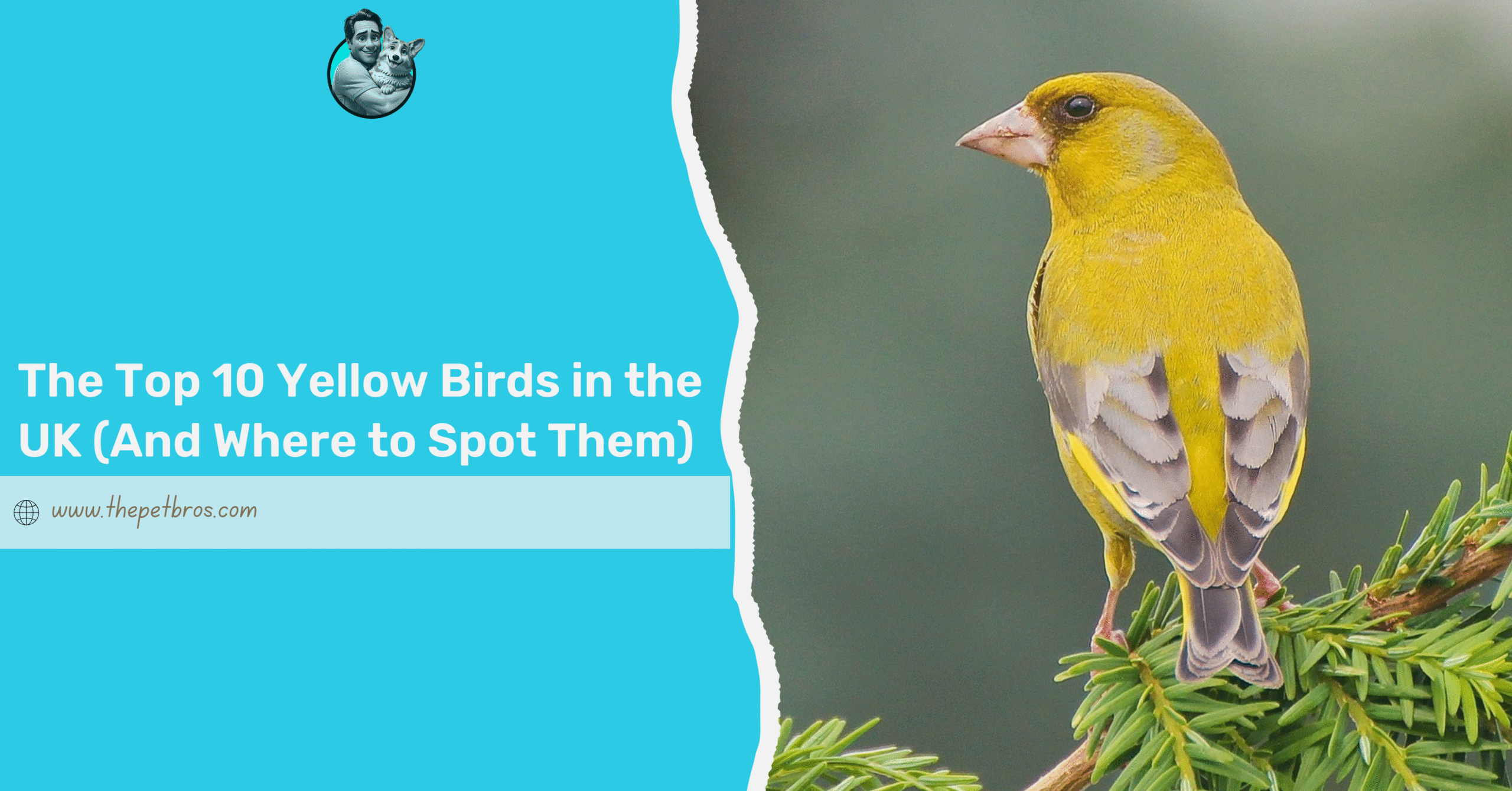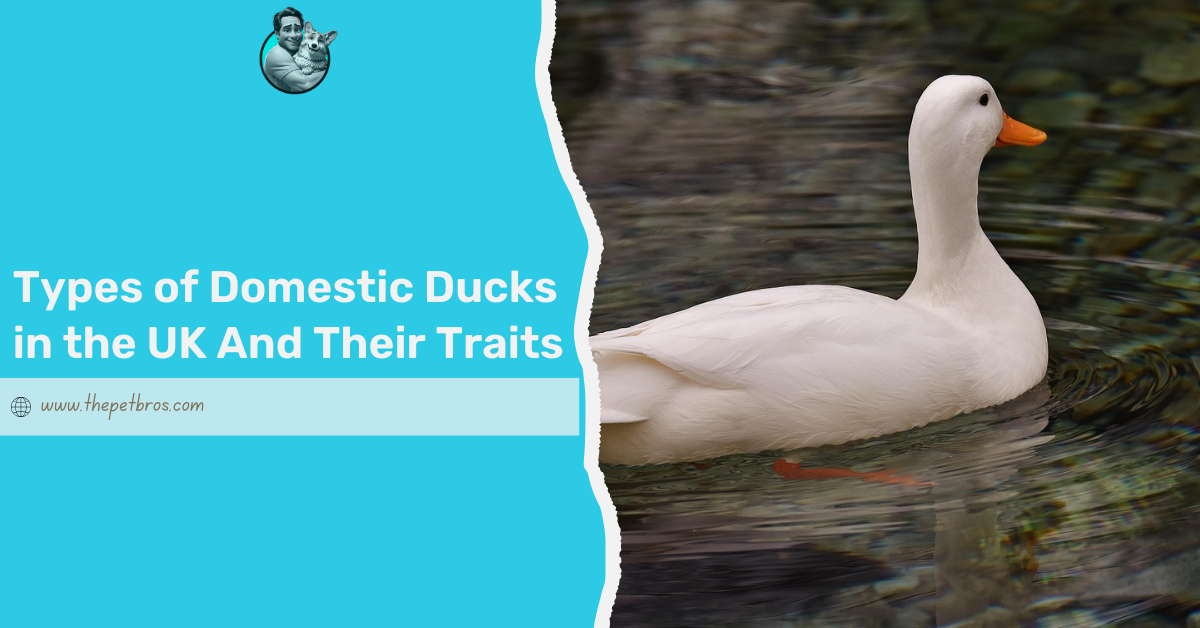If you’ve ever taken a moment to enjoy the sights and sounds of an average British garden, chances are you’ve encountered a tit bird. These small, lively birds are a beloved sight across the UK, known for their bright colours and cheerful songs. For many pet lovers, having a tit bird as a pet can bring a sense of joy and a deeper connection to nature.
But with several types of tit birds in the UK, it can sometimes be tricky to tell them apart. From the common Blue Tit to the less familiar Crested Tit, each species has its own unique characteristics and charm. Whether you’re looking to keep these birds as pets or simply want to learn more about them, knowing the differences can help you choose the right one.
In this guide, we’ll take a closer look at the types of British tit birds you’re likely to see around the UK, exploring their distinct features, where to find them, and how to attract them to your home.
First, What Are Tit Birds?
Tit birds, known simply as “tits,” are a family of small, active birds with striking colours and spirited personalities. You’ll often spot them hopping around in gardens, flying between tree branches, or cheerfully calling out to one another.
One of the things that makes tit birds so appealing is their adaptability. They thrive in different environments and are known for their friendly nature, which makes them fantastic companions for those who love having a bit of nature at home.
Learning about the different types of tit birds in the UK can help you decide which one might be the best fit for you. Whether you’re interested in their social behaviour, their lovely songs, or simply their vibrant appearance, getting to know these birds better is a rewarding experience for any pet lover in the UK.
Top 7 Types of Tit Birds in the UK
Here are the seven types of tit birds in the UK:
- Blue Tit
- Great Tit
- Coal Tit
- Long-Tailed Tit
- Marsh Tit
- Willow Tit
- Crested Tit
1. Blue Tit (Cyanistes Caeruleus)
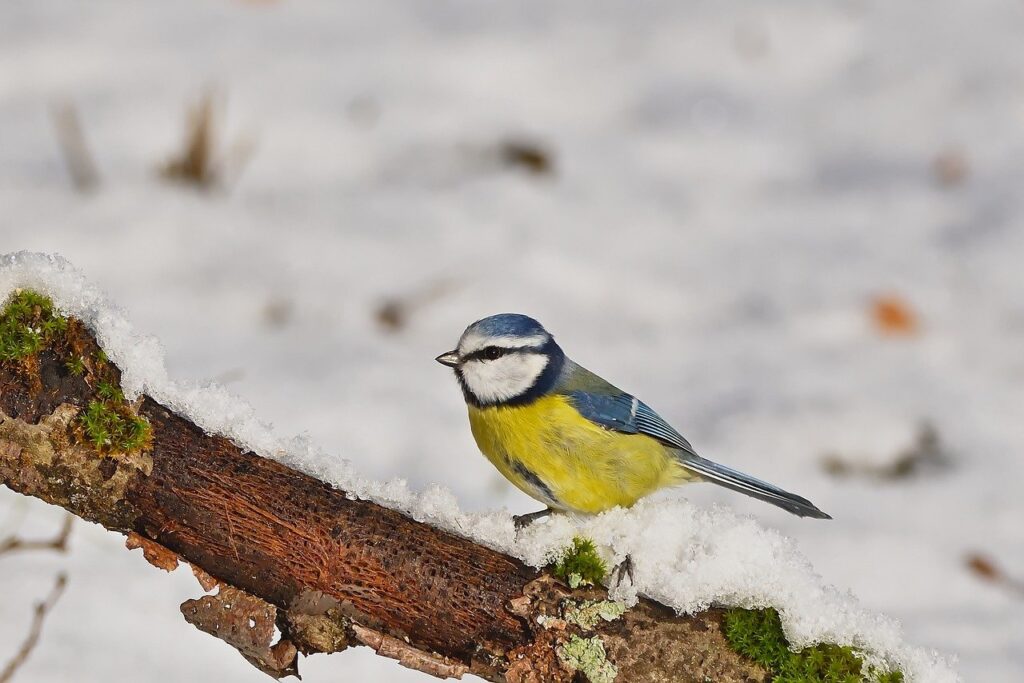
The Blue Tit, with its vibrant blue and yellow feathers, is one of the most recognisable tit bird types in the UK. It’s a small bird, measuring around 12 cm in length, and is known for their acrobatic abilities, often seen hanging upside down as they hunt for insects and spiders among tree branches.
As with other tit birds, Blue Tits are highly adaptable and have learned to thrive in both rural and urban environments. During winter, they frequently visit garden feeders. They are particularly fond of peanuts, sunflower seeds, and fat balls.
For pet enthusiasts, Blue Tits can be quite entertaining, but they need a stimulating environment with plenty of opportunities to hunt and explore. They are also one of the most innovative nest builders among tits, often choosing unusual spots for their nests, from mailboxes to pipes. Understanding where Blue Tits build their nests can help provide them with a safe and comfortable home if you are considering keeping them in your garden.
2. Great Tit (Parus Major)
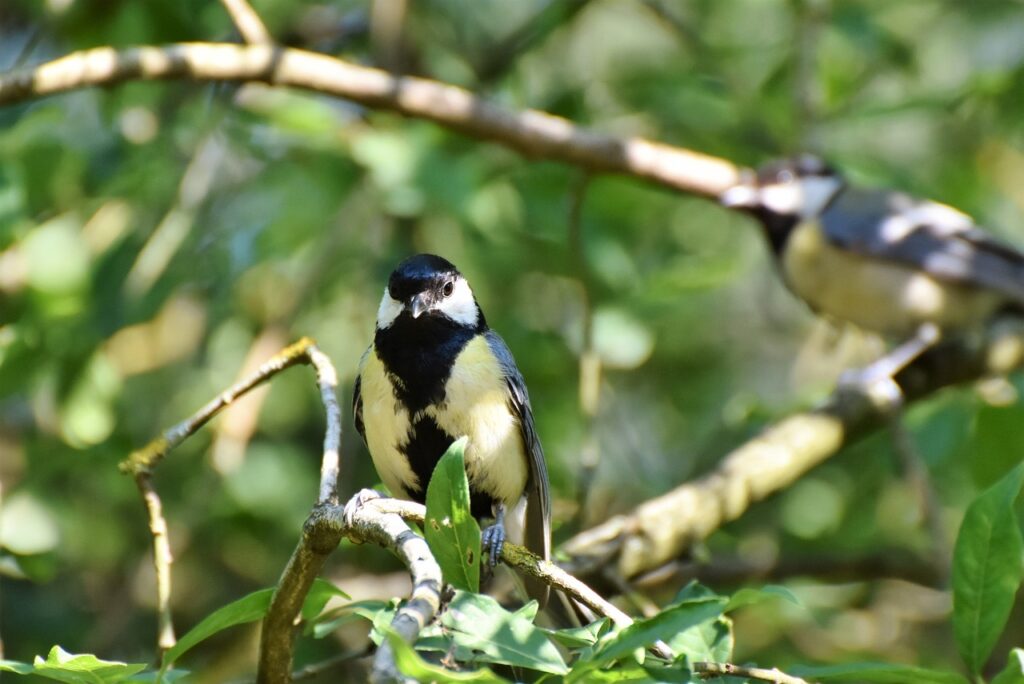
The Great Tits is the largest types of tit birds in the UK, easily identified by its striking black head, white cheeks, and bright yellow underparts, with a bold black stripe running down its chest. They measure about 14 cm and have a wingspan of up to 25 cm, making them more robust compared to their relatives.
Great Tits sing more complex songs; in fact, they have over 40 different calls. This vocal diversity makes them quite fascinating for both birdwatchers and pet owners.
Also, unlike some of the smaller types of tit birds in the UK, Great Tits are bold and often dominate garden feeders. They have a varied diet, including seeds, nuts, and insects, and are known to adapt quickly to new food sources. They are highly intelligent and have been observed using tools, which is a rare behaviour among small birds.
However, although they are supposedly intelligent, Great Tits need space and mental stimulation. Also, their boldness can sometimes lead to aggressive behaviour, especially during breeding season, when they fiercely defend their territory.
3. Coal Tit (Periparus Ater)
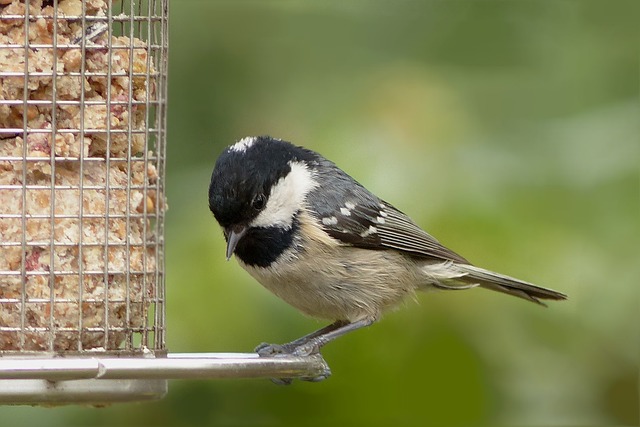
Though less vibrant than the Blue or Great Tit, the Coal Tit is easily distinguished by its small size, black cap, white nape patch, and grey back. People call Coal Tits “quiet cousins,” thanks to their subtle yet charming presence in the UK’s bird population, according to the UK government.
Coal Tits are known for their remarkable ability to hoard food, especially seeds, tucking them away in tree bark or soil to retrieve later during harsher months. They are also generally more reserved and tend to stay higher up in trees, often mingling with other small birds, including the smallest British bird, the Goldcrest.
They are more likely to visit feeders in the winter when food is scarce, but they prefer wooded areas where they can hunt undisturbed. To attract Coal Tits, create a naturalistic setting with plenty of trees and shrubs. More importantly, unlike their more social relatives, Coal Tits appreciate a quieter environment, so they’re best suited for pet owners who have a calm and serene garden space.
4. Long-Tailed Tit (Aegithalos Caudatus)
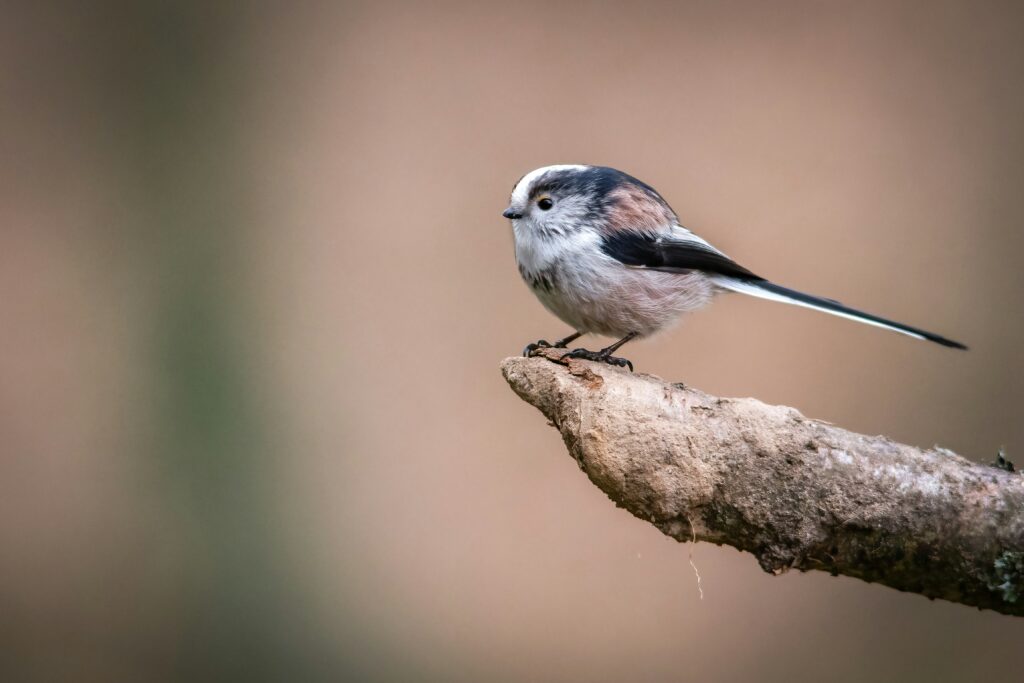
As their name suggests, Long-Tailed Tits have a tiny body and disproportionately long tail. These fluffy, pink-tinged birds are often found in small family groups that can number up to 20. They rely heavily on group cohesion for survival, especially in the colder months when they roost together to conserve warmth.
Long-Tailed Tits are known for their unique nests, which are spherical and made from lichen, moss, and spider silk. They often place these nests deep in bushes or trees, making them difficult to spot. For food, they primarily eat small insects, but they will also take seeds and suet from feeders. Unlike other types of tit birds, Long-Tailed Tits are not true members of the Paridae family but are closely related.
5. Marsh Tit (Poecile Palustris)
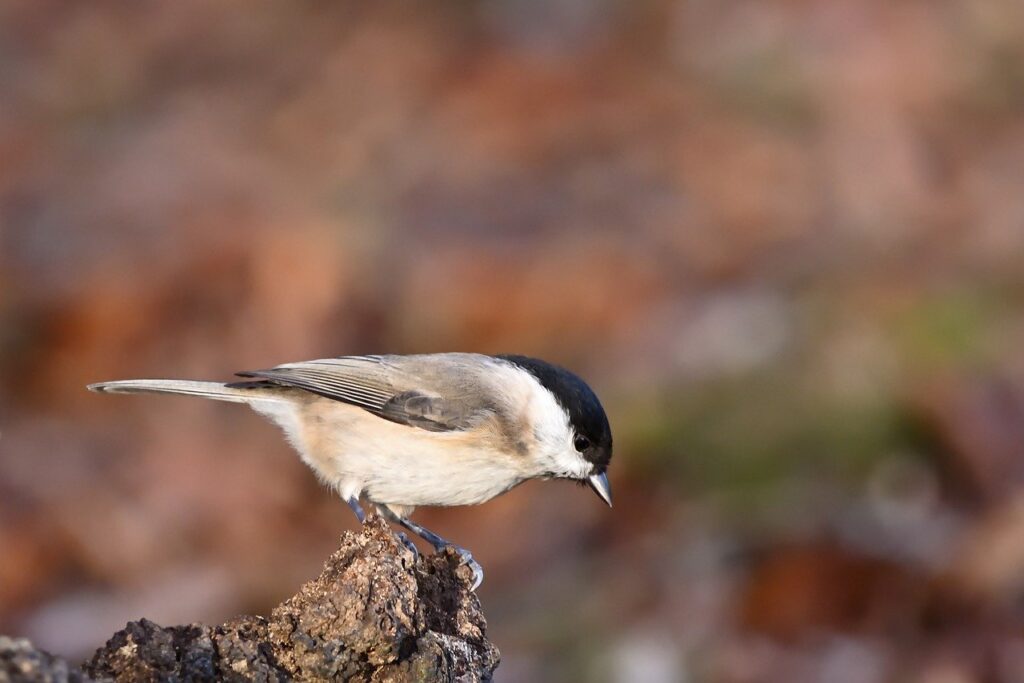
The Marsh Tit has a glossy black cap and a small, neat appearance. Measuring about 12 cm, Marsh Tits often find their way to feeders, take a single seed, and fly off to consume it in a more secluded spot. Unlike some of their relatives, Marsh Tits are less likely to linger at feeders, making them a bit more challenging to observe for long periods.
Although they are not as common as other types of tit birds in the UK discussed in this article, they are most commonly found in deciduous woodlands and are increasingly rare due to habitat loss. To attract them, ensure your garden mimics a natural, wooded environment.
Also, they are quite territorial and demand privacy and quiet, especially during breeding season, which is reflected in their choice of nesting sites, too — often in rotten stumps or natural cavities. You can also attract them by using nesting boxes with smaller entrance holes (if you live near a suitable habitat).
6. Willow Tit (Poecile Montanus)
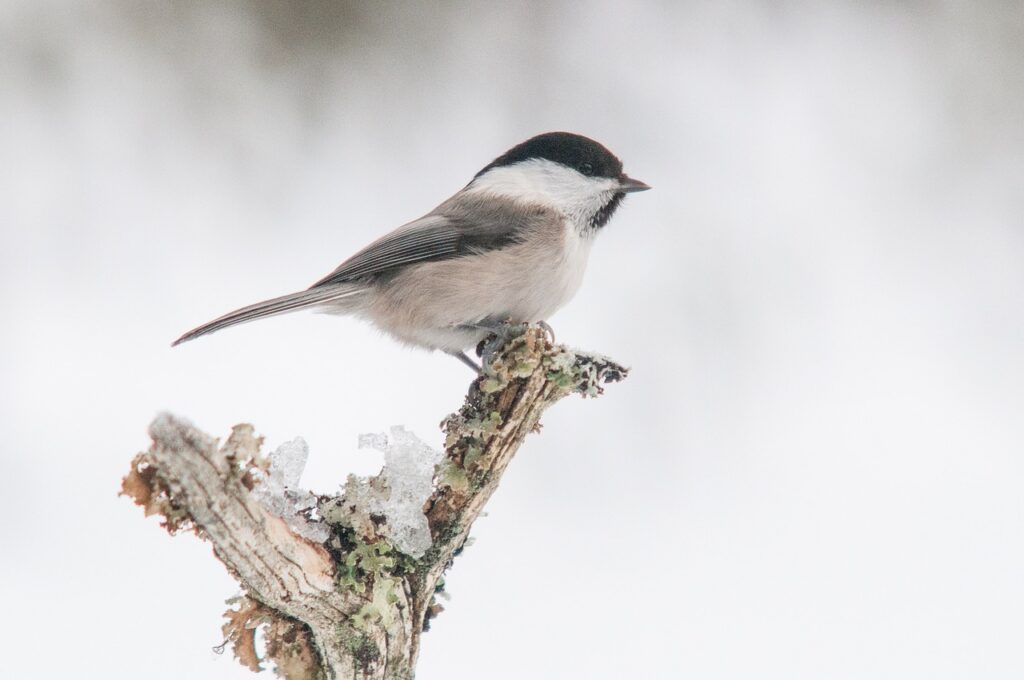
The Willow Tit, another understated beauty among the types of tit birds, closely resembles the Marsh Tit but has a more matte black cap and pale wings. They are less likely to visit busy gardens, preferring quiet, damp woodlands and scrubby areas. If you’re lucky enough to live near such habitats, you might spot them foraging low among shrubs, unlike other tits that prefer the treetops.
Another unique feature of the Willow Tits is how it builds its nests. Unlike most small birds, Willow Tits excavate their own nests in decaying wood, showing an impressive level of perseverance and adaptability. Unfortunately, Willow Tits have faced significant declines in the UK, making them a rare but treasured sight. Creating a garden that mimics their natural habitat could encourage their presence.
7. Crested Tit (Lophophanes Cristatus)
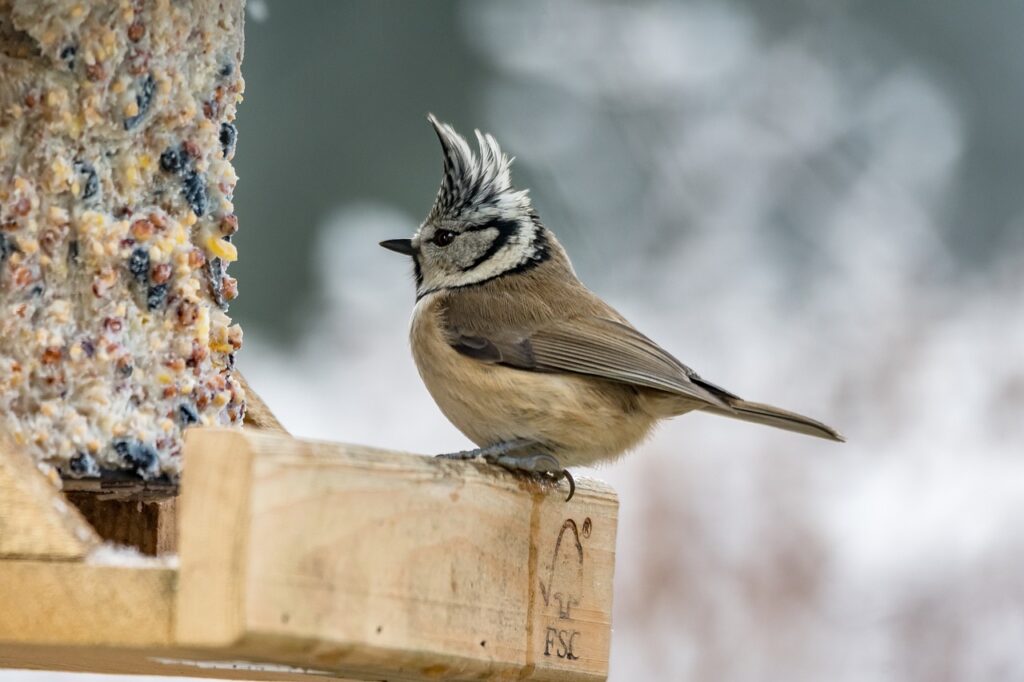
Lastly, on UK tit birds, we have the Crested Tit. Primarily found in the pine forests of Scotland, this bird is instantly recognisable by its striking crest and bold facial pattern – (you see that unique pattern on its head?). You will rarely see a Crested Tit in gardens – they prefer forests.
So, it’s only expected that they are quite hardy, as it is required for them to adapt well to the colder climates of their northern habitats. Providing suitable feeders with a variety of seeds might tempt them closer, but they generally remain shy and elusive.
How to Attract Various Types of Tit Birds in the UK to Your Garden
- Provide Multiple Food Sources: One of the best ways to attract tit birds is by offering various high-quality food. These birds are fond of seeds, nuts, and suet. Sunflower hearts, peanuts, and fat balls are excellent choices that can attract them, too. Placing feeders in a quiet spot will encourage them to return regularly. It’s also a good idea to use feeders with different designs to cater to the varying feeding habits of different tit species. Learning more facts about tit birds can provide insight into what types of food different tit species prefer, helping you to tailor your offerings to attract specific birds.
- Create Safe Nesting Spots: Tit birds are known for their nesting habits. To attract them to nest in your garden, consider installing birdhouses that mimic their natural nesting sites. Birdhouses should be placed in a quiet area, away from busy paths and direct sunlight, to provide a safe and comfortable environment. Make sure the entrance hole size matches the specific type of tit bird you wish to attract; for example, a 25mm entrance is ideal for Blue Tits, while Great Tits may prefer a slightly larger hole.
- Offer Natural Shelter and Cover: Birds generally feel most at home in environments that provide plenty of cover from predators. Planting a mix of native trees and shrubs can offer natural shelter that makes these birds feel safe. In addition to trees and shrubs, leaving parts of your garden a little wilder — with piles of leaves, logs, and branches — create natural habitats for insects, which are an important food source for tit birds.
- Minimise Disturbance: To keep tit birds returning to your garden, ensure you have reduced (if not eliminated) disturbances. These birds are sensitive to sudden movements and loud noises, so keeping the area around feeders and birdhouses calm and quiet is key. If you have pets, especially cats, consider using deterrents or placing feeders high enough to keep them out of reach. For additional protection, you could use feeder cages designed to keep larger birds and predators away, allowing smaller birds like tits to feed in peace.
Conclusion
Bringing a tit bird into your life, whether as a garden mate or a more close-up pet, is a wonderful way to experience the joy and beauty of these charming birds. However, the various types of tit birds have their own unique needs and personality, so it’s important to choose the one that best suits your home and lifestyle. By providing the right food, shelter, and safe spaces, you can create a welcoming environment that not only attracts these birds but also keeps them healthy and happy.
So, now that you are familiar with the different types of tit birds in the UK, are you ready to take the next step? Or you may want to see some more common British birds before making a choice!
Frequently Asked Questions
What is the rarest tit bird in the UK?
The rarest tit bird in the UK is the Crested Tit. This bird is mainly found in the ancient pine forests of Scotland, and unlike other more popular types of tit birds, the Crested Tit is rarely seen outside these specific habitats.
How do you differentiate between a Marsh Tit and a Willow Tit?
Marsh Tits and Willow Tits are often confused due to their similar size and appearance, but the Marsh Tit has a glossier black cap and a small white spot at the base of its upper beak, while the Willow Tit’s black cap is more matte, and it lacks the white spot. Their calls are also different: the Marsh Tit has a distinctive “pitchoo” call, whereas the Willow Tit produces a nasal “chay-chay” sound.
What is the best time of year to see tit birds in the UK?
Tit birds are UK residents, so you can see them anytime. However, you will see them more often during autumn and winter because they tend to flock together more during this period.
What should I feed tit birds in my garden?
Tit birds thrive on a diet rich in seeds, nuts, and insects. For a balanced diet, provide sunflower seeds, peanuts (unsalted and not whole to avoid choking), and suet or fat balls. Mealworms are also an excellent source of protein, especially during breeding season. Avoid feeding them bread, as it offers little nutritional value and can be harmful in large quantities.
What’s the difference between a Great Tit and a Blue Tit?
The Great Tit is larger, with a bold black head, white cheeks, and a vibrant yellow chest with a black stripe running down the middle, while the Blue Tit is smaller, with a blue cap, white face, and bright blue and yellow plumage. Behaviourally, Great Tits are known for their loud, varied calls and more dominant behaviour, while Blue Tits are highly acrobatic and often seen hanging upside down from feeders.






